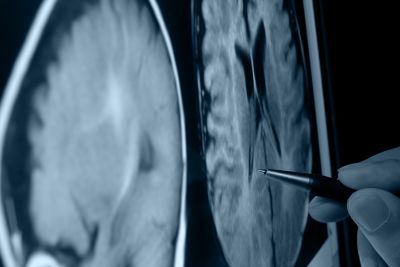Gene therapy beats back brain wasting disease

Your support helps us to tell the story
From reproductive rights to climate change to Big Tech, The Independent is on the ground when the story is developing. Whether it's investigating the financials of Elon Musk's pro-Trump PAC or producing our latest documentary, 'The A Word', which shines a light on the American women fighting for reproductive rights, we know how important it is to parse out the facts from the messaging.
At such a critical moment in US history, we need reporters on the ground. Your donation allows us to keep sending journalists to speak to both sides of the story.
The Independent is trusted by Americans across the entire political spectrum. And unlike many other quality news outlets, we choose not to lock Americans out of our reporting and analysis with paywalls. We believe quality journalism should be available to everyone, paid for by those who can afford it.
Your support makes all the difference.A breakthrough mix of stem cell and gene therapy halted a lethal brain-wasting illness in two young boys, and could prove effective against other genetic disorders, researchers reported.
The boys, both seven when treatment began in France, are beset with X-linked adrenoleukodystrophy, or ALD, a hereditary brain disease that slowly stips away layers of fatty acids protecting nerve fibres in the brain.
Without treatment, ALD -- which only strikes males -- results in a downward spiral of physical and mental disability, and finally death. Few patients reach adolescence.
The disease's terrible toll was depicted in the 1992 film "Lorenzo's Oil", the true story of an American couple's tireless struggle to find a cure for their son.
"This is the first time that a very severe brain disease has been treated with efficacy by gene therapy," said lead researcher Patrick Aubourg, a professor of paediatrics at University Paris-Descartes.
Up to now, ALD patients were given bone marrow transplants, a technique hampered by the scarcity of donors and the risk of serious complications.
In the new treatment, bone marrow stem cells were harvested from the patients -- the boys, in effect, became their own donors.
The genetically defective stem cells were then "corrected" in a laboratory by inserting properly functioning genes, and then reinserted into the young patients after their diseased marrow had been destroyed.
In order to deliver the new, improved stem cells, the doctors devised a vehicle, or "vector," made from a modified and inactivated HIV virus.
The so-called "lentivirus" vector had never before been successfully used for gene therapy in humans, Aubourg said in a statement.
HIV is the only known virus able to introduce a therapeutic gene into the nucleus of non-dividing cells, such as stem cells and neurons.
After 14 to 16 months, the disintegration of the brain's protective fatty acids, called myelin sheaths, had stopped.
And after two to two-and-a-half years, healthy ALD proteins were still detectable in the boys, both of whom showed neurological improvement.
In principle, the technique should result in the expression of the therapeutic gene "for life" because it is inserted into the chromosome, said Aubourg.
Gene therapy is not without risk, the researchers cautioned, and the new method may not be as effective with other diseases.
"There is still a lot of work to be done to make this gene therapy vector more powerful, less complicated and less expensive. This is only the beginning," Aubourg said.
ALD is a rare disease, with only three dozen cases reported each year in France, and 300 to 350 cases in the United States.
mh/cjo
Join our commenting forum
Join thought-provoking conversations, follow other Independent readers and see their replies
Comments